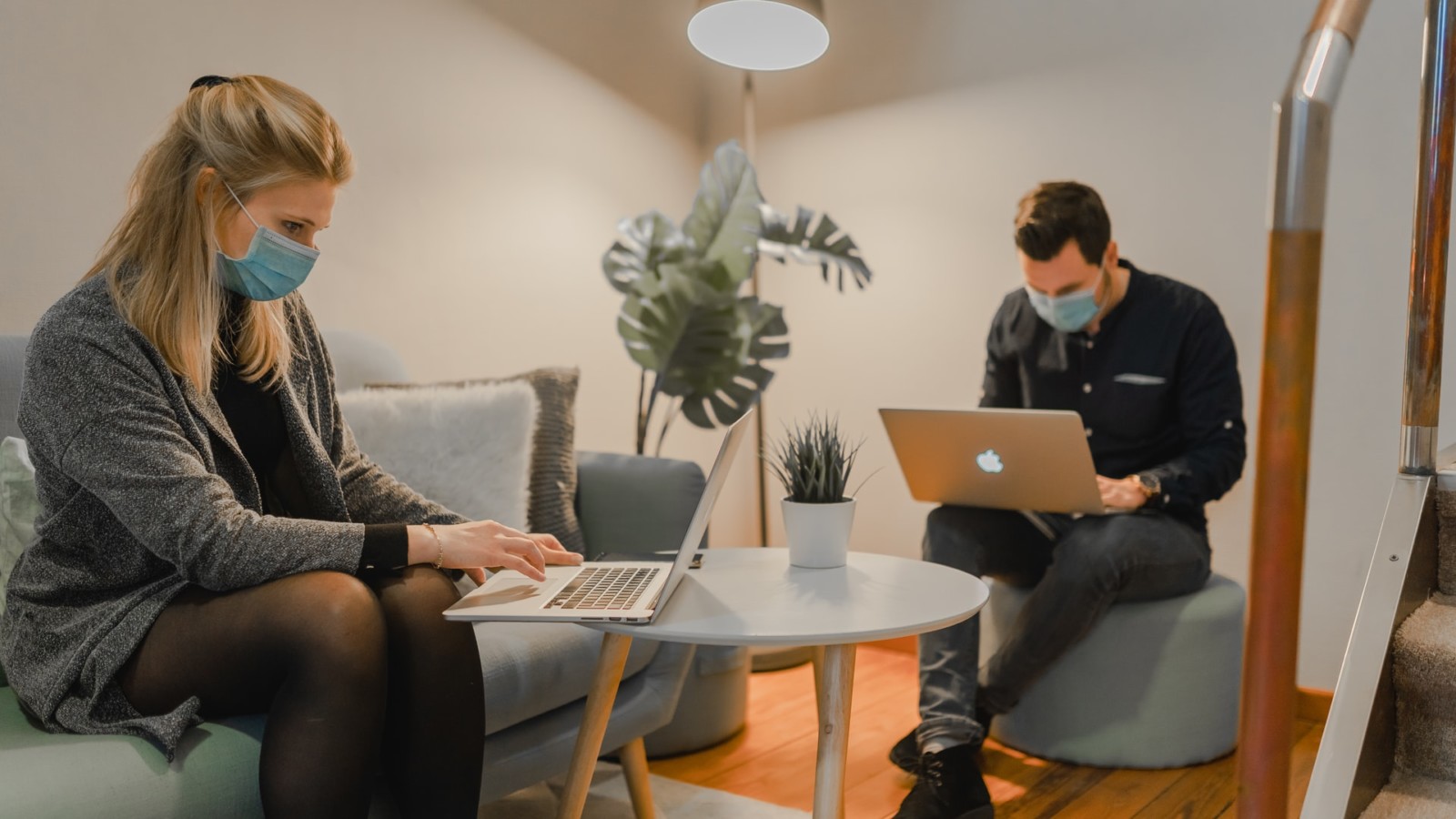Going to the office used to be a regular part of your routine, but now it makes you worry. You may have worked from home since the COVID-19 pandemic began and dread working in person with people again. Maybe you caught the virus and aren’t sure if it’s safe to return. This guide explains how to handle back-to-work anxiety and “reverse culture shock,” the latest roadblock for everyone trying to emerge from the recent pandemic.
Give Yourself Grace
Work anxiety can flare up even during a happy Saturday afternoon. It’s that feeling when your gut twists and your heart starts pounding. Your stress may increase while thinking about sitting in close cubicles again or dining with co-workers in the shared kitchen space. When this feeling starts to overwhelm you, give yourself grace.
Many people feel the same way. No one wants to put themselves at risk unnecessarily, but everyone has to pay their bills. The conflicting feelings make going back to the workplace a struggle. Remind yourself that after more than a year of your anxieties protecting your health, it’s okay to start easing back to normal as community spread reduces.
Look Into Vaccination
People are also minimizing their reverse culture shock by getting vaccinated. Multiple vaccinations are available for free to adults in the U.S., giving the majority of the population a chance to prevent infection. Recent research found that of the 77 million fully vaccinated adults at the time of the study, 5,800 people experienced a post-vaccine COVID-19 infection and only seven percent of those individuals required hospitalization.
The vaccines range in efficacy from 66-95%, so a minimal number of cases will occur. However, it’s important to note that the vast majority of vaccinated people will not get sick with COVID-19. Getting vaccinated will significantly reduce your odds of catching the virus and developing symptoms that keep you out of work or endanger the people around you.
Check-In With Yourself
If you’ve recovered from COVID-19, your mental health may not feel prepared to finish working from home. Before returning to work, consult your doctor. They might recommend that you bring a list of workplace restrictions to avoid pushing your health too far.
Staying off of your feet for prolonged periods will help those with shortness of breath due to long-haul COVID-19 symptoms. You could also ask your workplace to supply extra personal protective equipment (PPE) like a second mask or face shield to further protect any potential spread, if you’re worried about being around at-risk co-workers.
Checking in with yourself and your doctor will reduce your back-to-work anxiety by laying out your worries and finding preemptive solutions.
Learn Breathing Techniques
Even if you get vaccinated, work with your doctor and prepare extra protective equipment, anxiety can still be a powerful force in your life. Breathing techniques make it easier to control any worries by activating the parasympathetic nervous system through targeted exhales.
Inhaling into your diaphragm, exhaling slowly and being mindful of how each breath supports your body will help you handle any reverse culture shock making you uneasy.
Talk With Your Co-Workers
Worrying about the virus can make people feel isolated. The best response for the last year has been to quarantine from loved ones. Even if you’re self-isolating, talk with your co-workers about their shared work anxieties.
Bonding over shared concerns and mitigation strategies reduces any feelings of embarrassment or isolation. It will also make you feel better about going back to the office if you know your co-workers are also doing their part to reduce the virus’s spread.
Discuss a Hybrid Schedule
If you or your doctor decide that it’s not the right time to work in-person full-time again, discuss a hybrid schedule with your manager. You could work in the office for a few days a week and spend the other days at home. It may make the adjustment easier and gives you more control over your health. Control is always a good way to fight anxiety, which often stems from feeling powerless.
Handle Your Back-to-Work Anxiety
Now that you’ve read a few great tips, you’ll know how to handle back-to-work anxiety and reverse culture shock. Consider which worries are most prevalent and how you can work around them. Creating a hybrid schedule, getting vaccinated and working with your doctor should make it easier to create a new version of your everyday work life.


